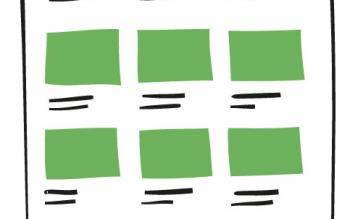Lead paragraph
Story-boards provide a simplified description of the main elements of the service concept. Story-boards help designers to visualize the concept from start to finish as it is developed by drawing and drafting out main elements/phases/moments of your service.
PREPARATION: up to 15 minutes
DESIGN PHASE: Creation
DURATION: 30-60 minutes
TEMPLATE OR GUIDELINES: Storyboard template
FACILITATORS: 1 per workshop
RESOURCES: Pens, Post-its, a large sheet of paper or whiteboard
PARTICIPANTS: 3–30, design team, partners, community members, etc.
EXPECTED OUTCOME: Service stories
Story-boards help designers to define what the service idea is and reveal who will use it, where, and how. It is important to make simple and quick drawings in order to help you think the idea through.
STEPS
1.START:
State the selected “How Might We” statement or a sub-focus area of it.
2.IDENTIFY:
Based on your design challenge statement or the focus of what you are interested in, define the criteria, and select suitable participants, considering not only who they are, but also what activities they would do. Consider what you want to prototype and what are the expected outcomes.
3.PREPARE:
Organize a meeting with the selected participants, and gather the necessary resources and supplies. List the main service components/episodes (e.g. welcoming episode) and the service elements of the episodes. Think about what expectations will be set up-front, how you will start and end the workshop, and how much time participants are expected to dedicate to this activity.
4.CONDUCT:
Ask participants to spend about 30 minutes drawing ways how the service work. Participants should use the Storyboard template, a series of comic book-style templates for drawing. This will help them spotlight key moments and build a short narrative. Once everyone is done, act out the Storyboard, and gather feedback.
5.REPORT:
Discuss the results and write up the key outcomes from this exercise.

